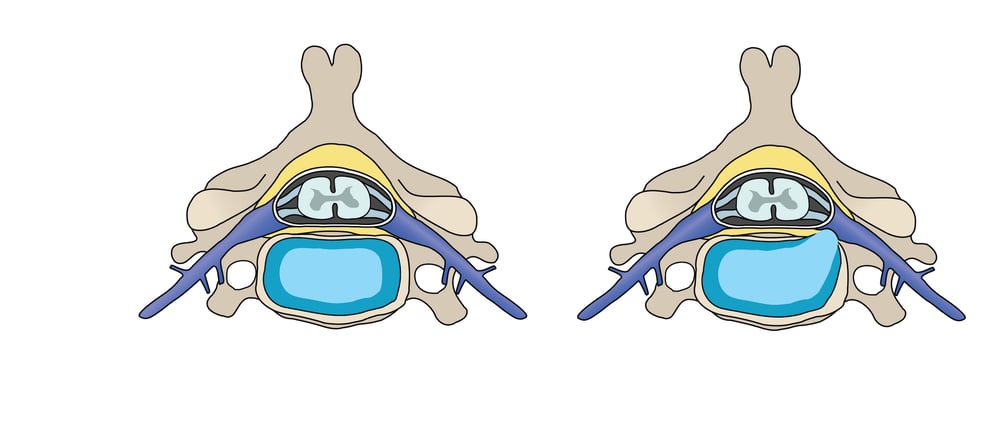
Issue 044
December 2008
By Rosi Sexton.
What is it?
In between the vertebrae (bones) of the spine are the intervertebral discs. These are a bit like doughnuts – they have a tough outer ring (annulus), with a jam-like filling (nucleus) in the middle. Sometimes, the annulus becomes damaged and the ‘jam’ can squeeze out. It most commonly happens with the discs in the lower back. This can cause pain and swelling round the injury itself, and if it presses on the nerves that come out from the spinal cord it can also cause pain, numbness, tingling, and pins and needles into the legs. In severe cases, it can also cause muscle weakness.
Herniated (‘slipped’) discs can also occur in the neck (or much less commonly in the upper back). This can cause pain and weakness in the arms.
Who’s had it?
Matt Serra had to pull out of his title defence against Matt Hughes on UFC 79 due to a back injury. An MRI scan revealed two herniated discs in his lower back. More recently, Karo Parisyan and Thiago Silva both withdrew from UFC fights with back injuries. While we don’t know what caused these injuries, herniated discs are a common cause of back pain in sportspeople and certainly a possible candidate.

How it happens
Disc injuries are most common when bending forwards, or bending and twisting at the same time. Lifting a heavy weight (or sparring partner) with the back in a bad position, or prolonged or repeated forward bending can be the cause of the injury, or may weaken the back and make it more likely that an injury will occur. Fighters are particularly vulnerable towards the end of a heavy training session when the muscles that normally stabilise the lower back may become fatigued.
Often, a disc herniation may appear to happen out of the blue from a very minor load. Fighters may say they were fine in training and then hurt themselves taking a shower or getting out of bed. Matt Serra injured his back demonstrating a move after a training session. In this situation, the fighter may have stretched or weakened the fibres of the annulus previously in training, and then even a small strain can cause the nucleus to push through.
Treatment
It depends on how serious the injury is. Most disc injuries eventually improve without surgery. Hands-on treatment and rehabilitation from an osteopath or physiotherapist may help in these cases. Serious disc injuries may need surgery, especially if there is significant numbness or weakness in the legs, in order to prevent long-term damage to the nerves.
How long can a fighter with this injury expect to be out for?
A disc herniation can be an exceptionally painful, disabling and frustrating injury for a fighter. It can take anything from weeks to months for the pain to resolve, depending on the severity of the injury. Making a full return to training may take longer than that, and in a few cases it can be career ending.
What long-term problems is it likely to cause?
Back injuries can recur or cause ongoing problems. Correct rehabilitation and strengthening exercises are important for anyone who trains or competes in combat sports at any level.
If you are suffering from any medical issues as a result of MMA training, be sure to get them checked out by a qualified sports medicine practitioner.
Professional fighter Dr Rosi Sexton PhD is a sports therapist and osteopath in training based in Manchester, England. She has fought in countries such as Russia, Canada and the USA, and is ranked as one of the top competitors in her weight class.
...









